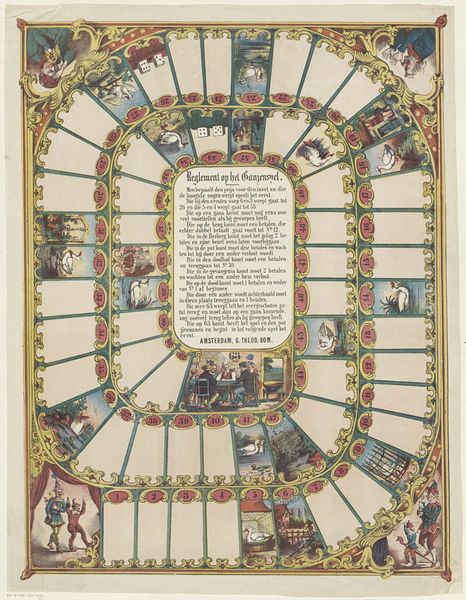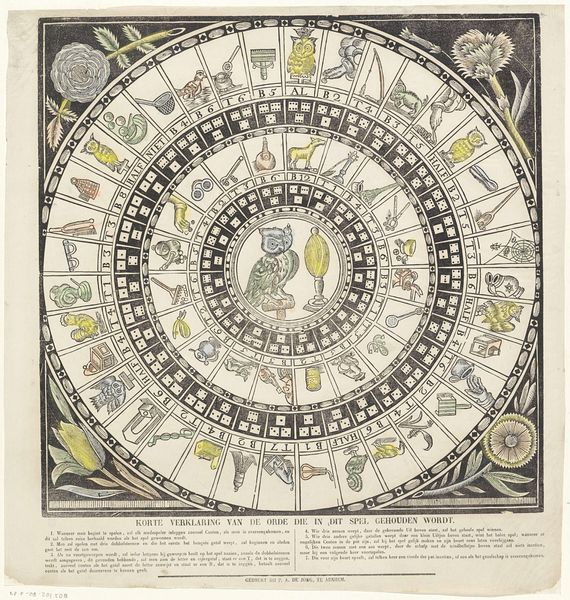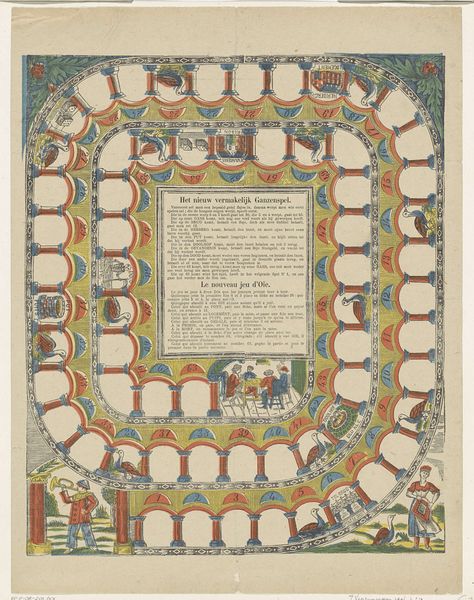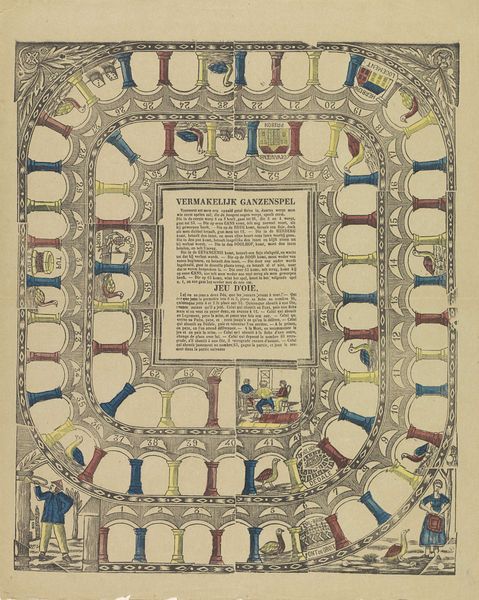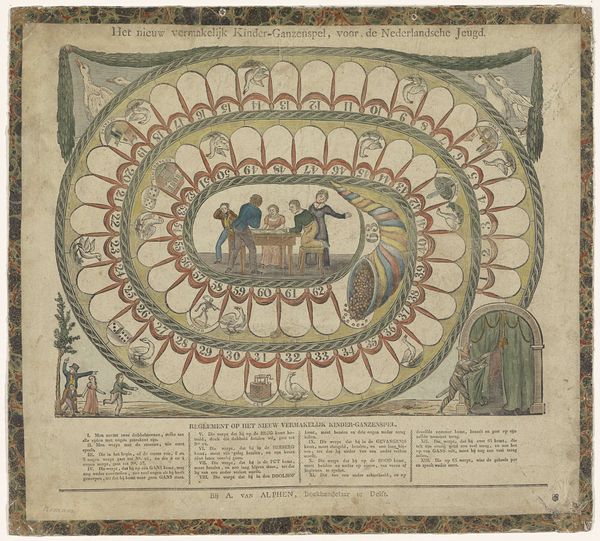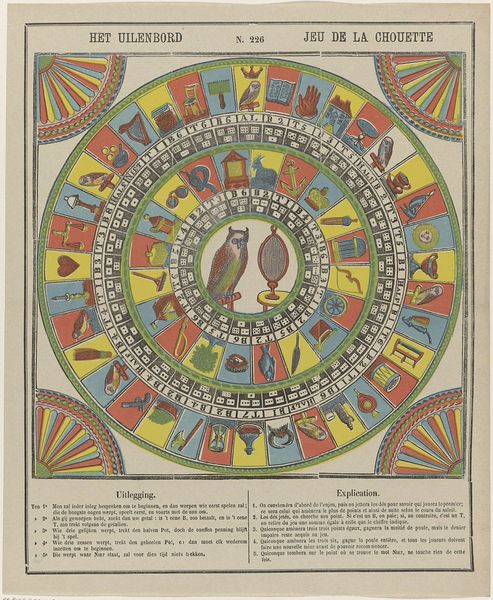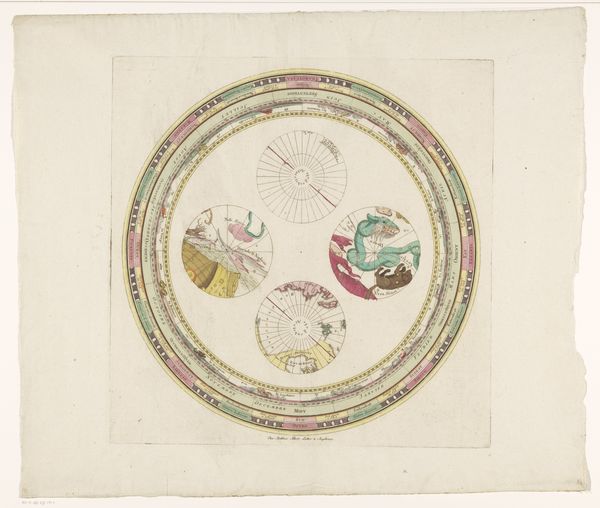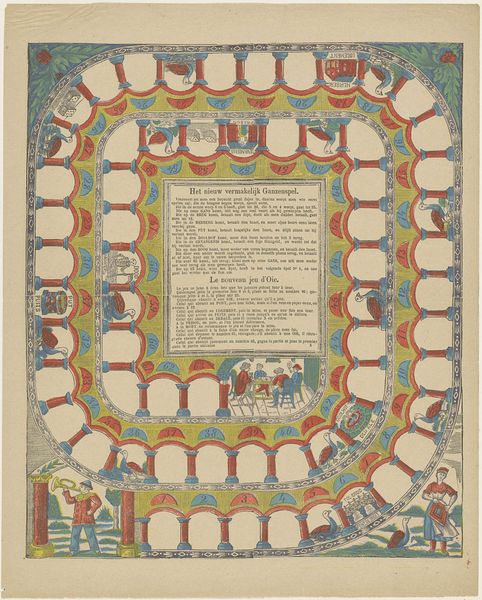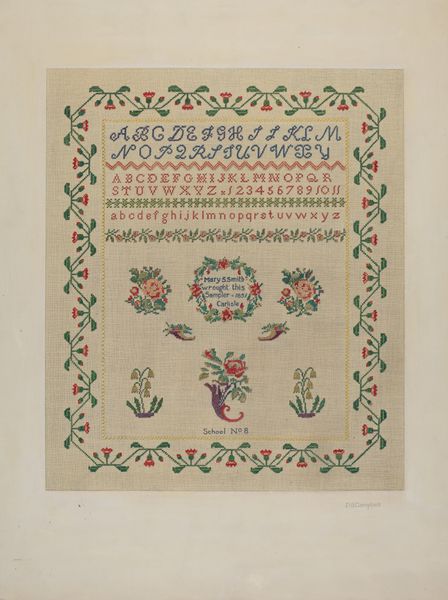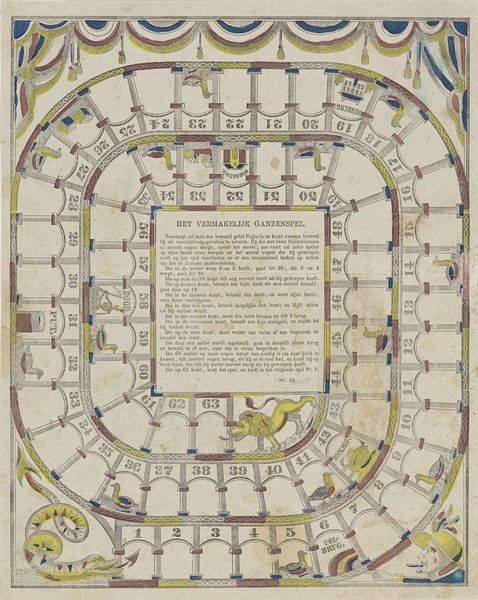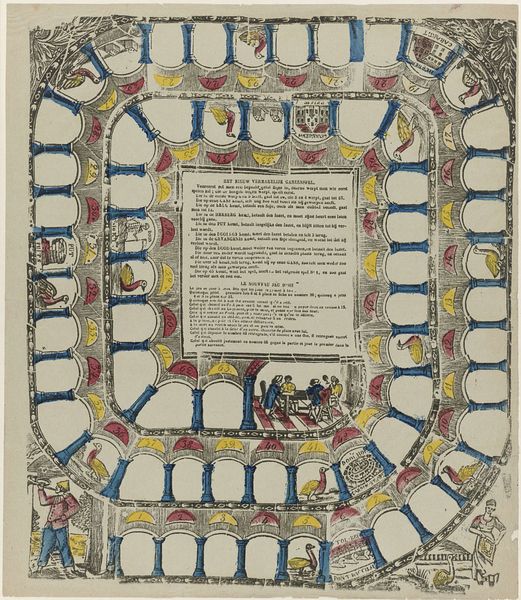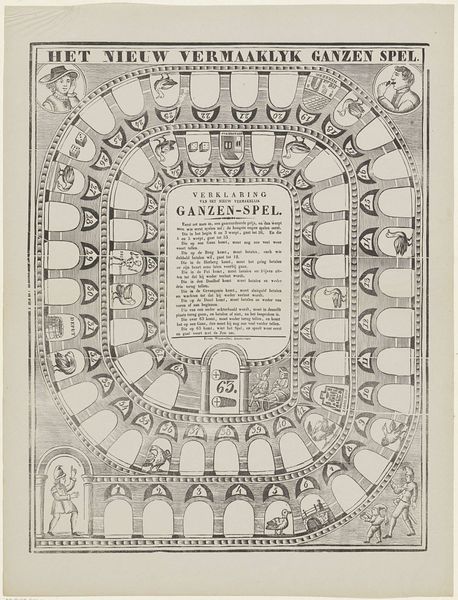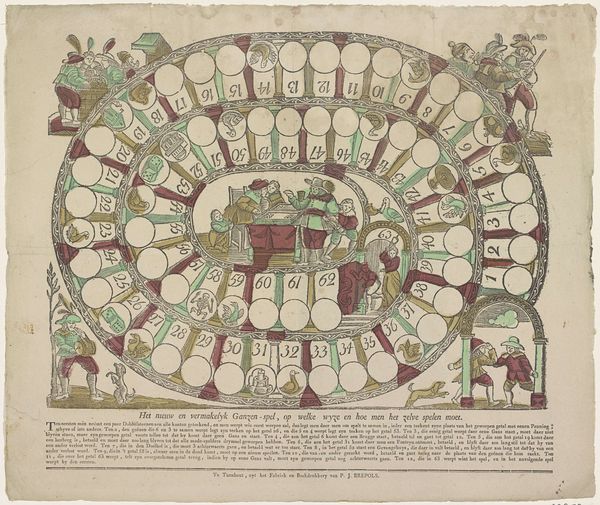
graphic-art, print, etching, paper
#
graphic-art
#
aged paper
#
pastel soft colours
#
ink paper printed
# print
#
etching
#
traditional media
#
collage layering style
#
joyful generate happy emotion
#
retro 'vintage design
#
paper
#
traditional style
#
genre-painting
#
decorative-art
#
warm natural lighting
#
coloring book page
Dimensions: height 446 mm, width 519 mm
Copyright: Rijks Museum: Open Domain
Editor: This is "Het nieuw vermakelyk ganzenspel / Nouveau jeu de l'oie," a game board print by Antoine van Genechten from around 1856 to 1870, combining etching and other graphic arts on paper. The colours are lovely – muted yellows, greens, and reds. How do you interpret this work beyond just a decorative game? Curator: The game board format, particularly something like the "Game of Goose," offers a compelling lens through which to view 19th-century social dynamics and values. The imagery, while seemingly simple, is coded with bourgeois aspirations. Where do you see these aspirations reflected within the composition? Editor: I suppose in the images themselves… some depict leisure, others nature, flowers and animals. And the board itself is so ornate, certainly for an upper class family. Curator: Exactly. But think about the game itself. Progress is not linear, is it? There are setbacks, diversions, even punishment. Consider how this might mirror the precarious nature of social mobility in that era. Each image could represent obstacles or rewards within that social climb. Editor: So, it’s more than just a game; it's a commentary? The goose represents that ascent, a goal? Curator: Perhaps. The goose was often a symbol of prosperity. The larger context matters: class structures, leisure activities, even colonial expansion fueled by that bourgeois desire for acquisition. Can you see echoes of those themes? Editor: Now that you mention it, I notice that I had reduced it to pure, aesthetic enjoyment. Curator: Precisely! That awareness allows for a richer understanding, connecting artistic creation with historical forces. I also noticed how much colonialism might inform how this particular design aesthetic became canonized by the bourgeoisie and upper class families across Belgium at the time. Editor: That's incredible! I'll never look at a board game the same way again.
Comments
No comments
Be the first to comment and join the conversation on the ultimate creative platform.
